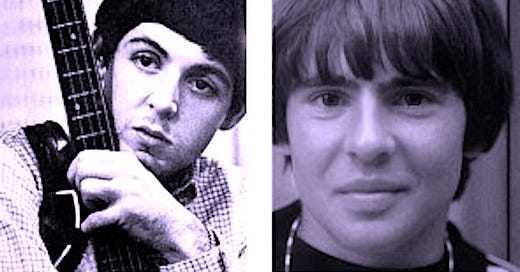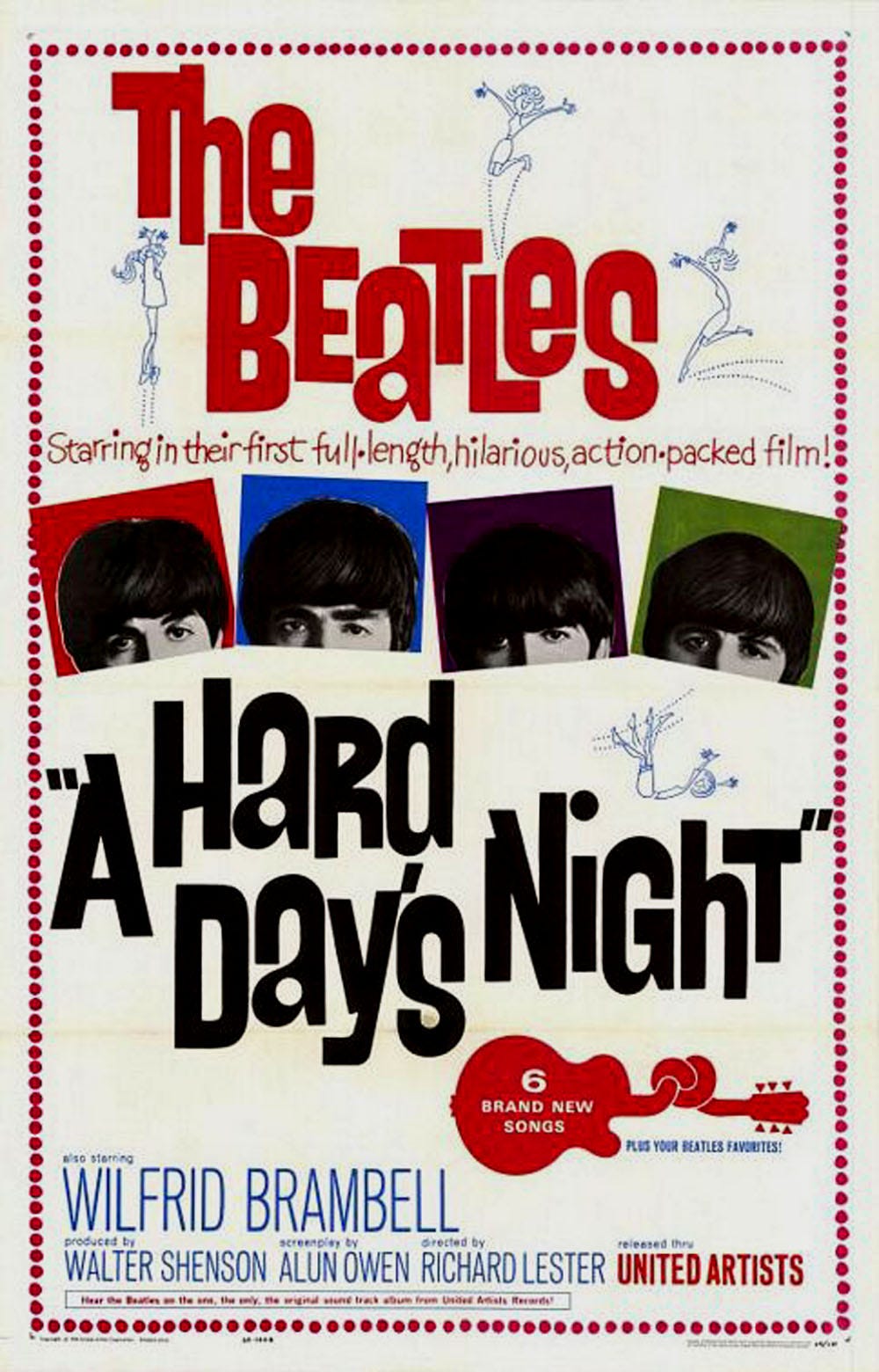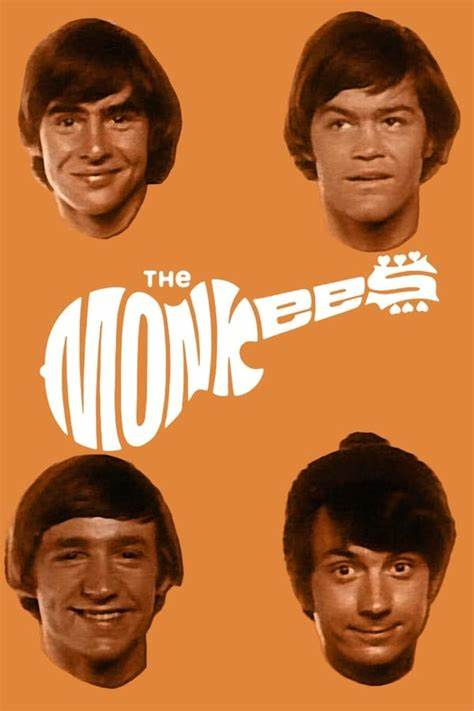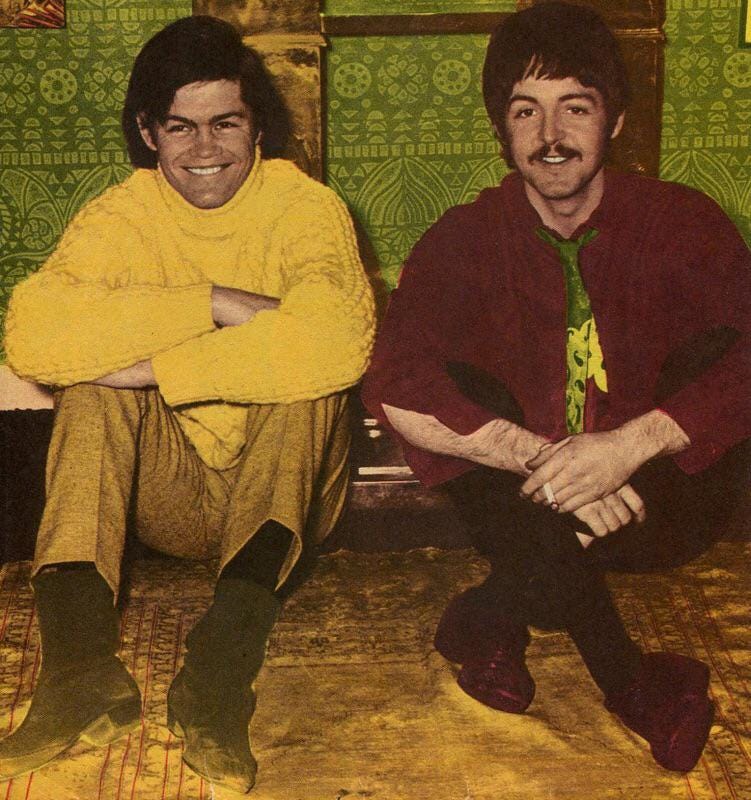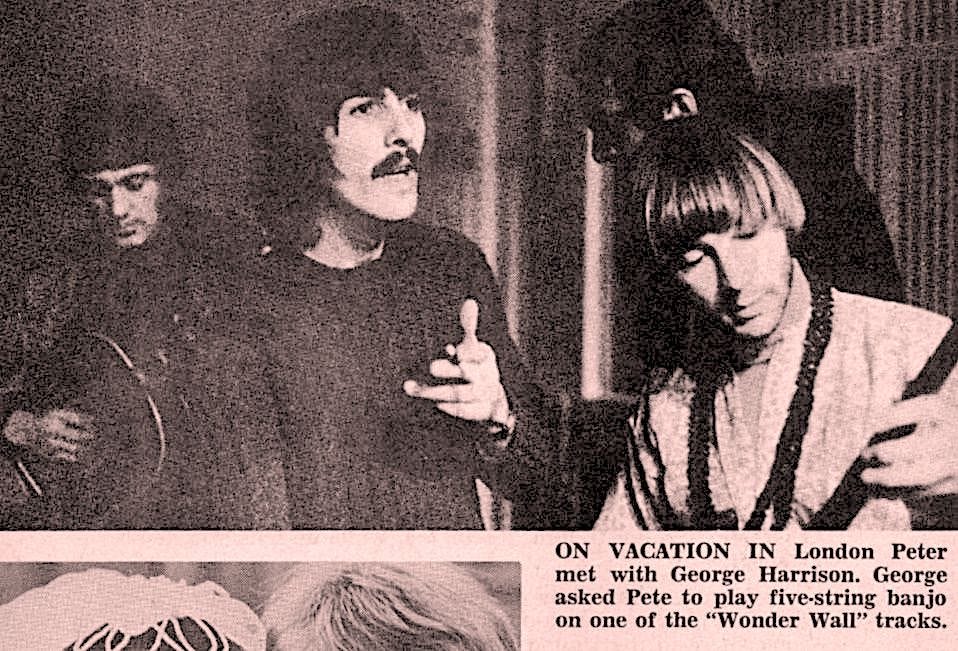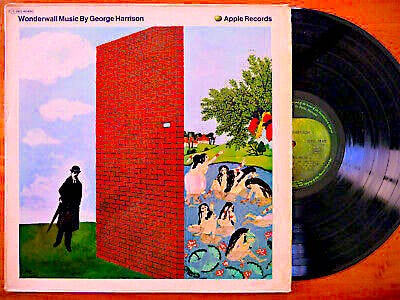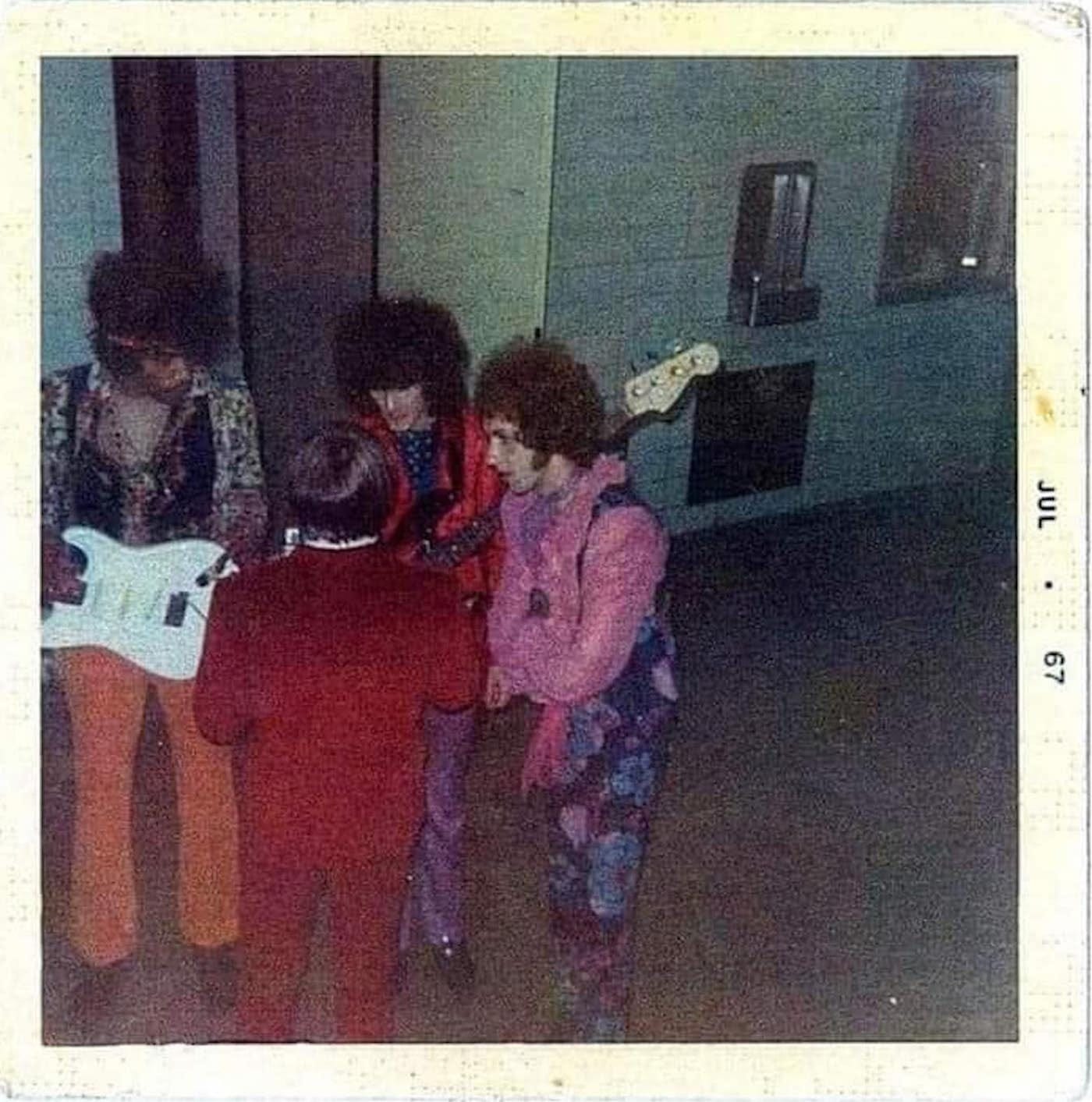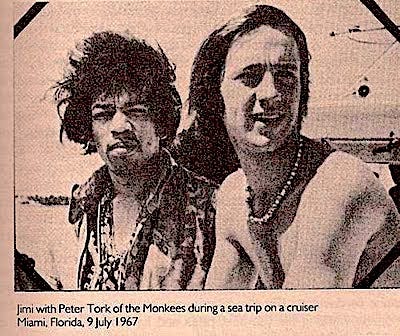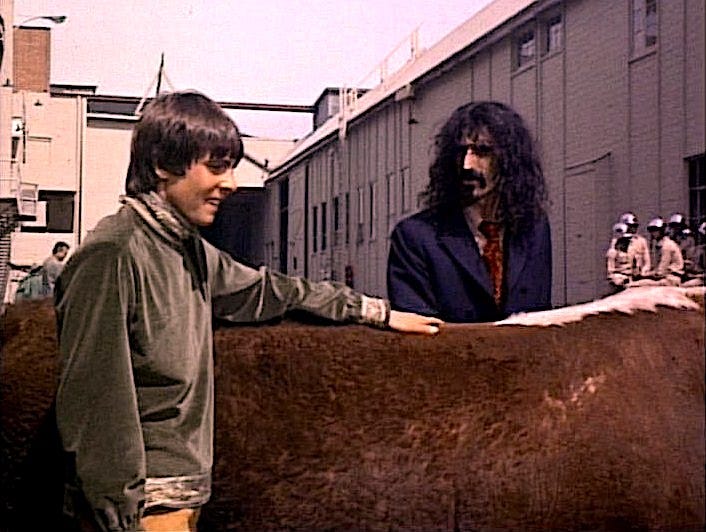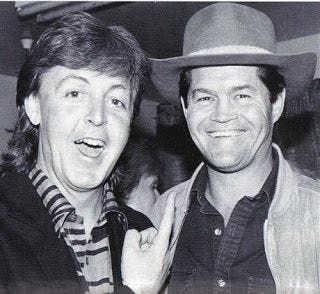Beatles Vs. Monkees--Full Story With Fab Photos
The Friendliest Competition in Rock'n'Roll History
Four lads from the backwater city of Liverpool started a rock’n’roll band called The Beatles, setting out with an exciting but modest set of goals. They thought of themselves as part of a slipstream, merely a continuum of music that influenced them, from Broadway to classical to folk to rockabilly to rhythm and blues. Instead they made records that changed the world. Little did they know that they, with manager Brian Epstein and producer George Martin, would become game-changers for how we measure art, celebrity, fashion, film, media, satire, scandal, sexuality, and spirituality in popular culture.
The jumping off point for The Beatles was their first feature length film, A HARD DAY’S NIGHT. The 1964 film set the bar for virtually every artist, influencer, and music act alive at the time.
A year later, in a direct homage to HARD DAY’S NIGHT, a musical TV sitcom went into development for Columbia-Colgems, created by Bert Schneider and Bob Rafelson (later of EASY RIDER and CHINATOWN fame). Davy Jones was already tagged for it because he was under contract to Colgems. After a now-legendary audition process, they added an actor who was musical—Micky Dolenz—and two musicians who could act—Michael Nesmith and Peter Tork—cast as a starving rock group always looking for gigs—charming young hipsters, living together without adult supervision (a first for a 60s TV show). They’d mix it up with comedy, innovative (sometimes surreal) film techniques, and hot songs. The concept wasn’t unique (Chad & Jeremy were considered for another sitcom; Paul Revere & The Raiders cranked out great records while plying comic schtick with Dick Clark), but “The Monkees” TV show premiered in 1966 and became a hit beyond expectations, fueled by expertly made records of ear candy that sold millions.
The series made no attempt to hide the Beatles Fab Four influences. Beatles-Monkees were cleverly punned band names, albeit misspelled animals (story has it that Rafelson/Schneider were calling them “The Parrots” but Davy Jones claimed to have coined “The Monkees”). In the very first episode of “The Monkees” TV show, Mike Nesmith threw a dart at a Beatles poster (hitting Ringo). In another episode, we see the four boys lying on the ground, mumbling, four heads pushed together in a shot directly taken from A HARD DAY’S NIGHT, and like the film where The Beatles play fictional versions of themselves, The Monkees follow suit. Almost every “Monkees” episode featured a romp of the four boys running around like stooges like The Beatles in the famous “running in the field” scene from A HARD DAY’S NIGHT. In another Monkees episode, Davy’s British grandfather comes to the States to pay a visit, mirroring Paul McCartney’s grandfather as the trouble-maker in HARD DAY’S NIGHT. Even in the very last Monkees episode, the boys wake up to their alarm clock / record player, blaring out “Good Morning, Good Morning,” the John Lennon song from SGT. PEPPERS.
By 1967, records by The Monkees were reportedly outselling The Beatles and The Rolling Stones combined. With that came the publicity machine that stirred up “competition and controversy” around pop acts of the day, and The Monkees (especially in the American press) were cast as bubblegum fluff, The Pre-Fab Four, airheaded pretty faces for the teen magazines (bear in mind there was no real rock music journalism back then) against the more creative and sophisticated Beatles. Fake feuds were commonly stirred up between teen idols of the day (anyone remember the “spat” between Davy Jones and Robin Gibb?), and a Beatles vs. Monkees clash was invented.
However, behind the curtain, there was nothing but admiration and friendship between the two titans. The Beatles showed no resentment over their imitators’ huge success, and John said The Monkees were “the funniest comedy team since the Marx Brothers—the rock’n’roll Marx Brothers,” adding that he “never missed an episode” of their TV show. George Harrison, another Monkees admirer, said, “When they get it all sorted out, they might turn out to be the best.”
Paul and Davy were the “heart-throbs” of the teams—the romantic leads and the girls’ favorites. By a strange bit of irony, when The Beatles made their legendary first appearance on “The Ed Sullivan Show” in February 1964 before a record-breaking TV audience of 73 million viewers, a young Davy appeared in the cast of “Oliver!” on the same broadcast. He’d grown his hair to play The Artful Dodger and thought it odd The Beatles had done the same. Nor was he ready for the throngs of screaming girls waiting outside—not for him but for The Beatles.
When The Monkees toured England in 1967, The Beatles threw them a huge (some say week long) party at the Speakeasy Club, a scene that inspired Micky Dolenz to write the song “Randy Scouse Git” (a hit in the UK)
Mike had dinner at John’s home and the two, and their respective wives, became friends. Mike also attended The Beatles recording sessions for the song “A Day in the Life” and he appears in a promotional film.
Paul befriended Micky, who was seen at the “Sgt. Pepper’s” recording sessions grinning happily.
Micky also brokered the sale of a Moog synthesizer to George (Moog’s were new and hard to come by in those days), heard a year later in George’s ELECTRONIC SOUND album (and was probably the same one used on ABBEY ROAD).
George also hired Peter to play banjo on the 1967 WONDERWALL film soundtrack.
Other episodes:
§ On February 13, 1967, Paul and Ringo attended a Jimi Hendrix concert. Then in June ‘67 Paul saw Jimi again and was flattered to hear the genius guitarist strumming “Sgt. Pepper.” In less than a week, Jimi was the opening act for The Monkees on their 1967 USA tour. In possibly the most eye-rolling irony in the history of rock , Jimi was booed off the stage by Monkees fans who didn’t get it. Of course, he wasn’t happy, and he left the tour after 7 shows—just in time for his ARE YOU EXPERIENCED album to take off. Micky and Peter were board members of The Monterey Pop Festival and had a hand in getting Jimi the gig. (Sidebar: Jimi and Peter, both blues fans, loved to jam, but nothing was recorded).
§ In 1968, John invited Davy to “white album” recording sessions. They tripped on acid while listening to playbacks of “Revolution 9” (Tiny Tim was there, too, supposedly not on acid).
§ John and The Monkees intersected with Frank Zappa, who appeared in 2 Monkees projects and performed live with John in 1972 (Frank was also Laurel Canyon neighbors with Davy and Micky. In the 70s Frank asked Micky to join The Mothers but Micky’s management wouldn’t let him).
§ Beatles and Monkees also intersected with Harry Nilsson, who got his breakthrough when he wrote “Cuddly Toy” for The Monkees.
§ Sometime in the early 70s (concurrent with Davy recording a cover of Paul’s “Man We Was Lonely”),
Paul contacted Davy—for an autograph! It turned out Paul’s daughter Heather was a big Monkees fan.
§ In 1976, Micky made a brief appearance in Paul’s documentary film WINGS ACROSS AMERICA.
§ In 1977, Micky and Ringo appeared together in a Levi’s commercial. When Micky hosted a radio show for WCBS-FM in New York, he interviewed Ringo. That same year Micky & Davy toured together, performing “Martha My Dear” in their set.
§ During the 90s, Davy regularly did “a Beatles song a night” in his solo concerts.
§ In 1995, Ringo appeared with Davy, Micky, and Peter in a “Pizza Hut” commercial, with the byline of “getting the band back together”
§ In 2002, Paul can be heard singing “Hey, Hey We’re the Monkees” in his concert film BACK IN THE US.
§ In 2013, after Davy had passed away in 2012, Paul contributed to a fund to help feed and maintain 14 horses Davy left in his Estate.
The Beatles were, without a doubt, immensely talented singers and musicians, with one of the greatest songwriting teams of all time (Lennon-McCartney). In their press conferences and their brief film careers, The Beatles also proved themselves to be comic wits. The Monkees were gifted comedic actors, renowned for pioneering and elevating the potency of music and visual media, not to mention creating an impressive body of records, much of which was composed by A-list songwriters (Carole King, Neil Diamond, Boyce & Hart) and they employed the best and most diverse studio musicians ever (The Wrecking Crew, Stephen Stills, Neil Young, etc.). In the end, beyond the forgotten noise of “showbiz competition,” the gifts of both acts reached a lot of people, made a difference, and continue to endear and endure.
(Thanks to Eddie Deezen/BrainFood Show for partially inspiring this article).
#beatles #monkees #johnlennon #mickydolenz #ringostarr #petertork #mikenesmith #michaelnesmith #georgeharrison #paulmccartney #davyjones #johnnyjblair #singersongwriter #teenidol #wreckingcrew #buffalospringfield)

